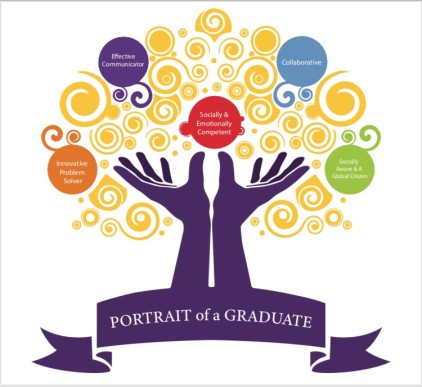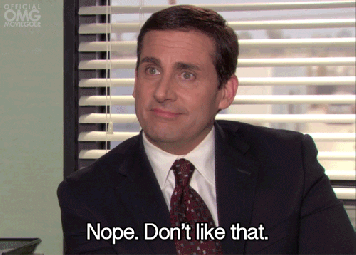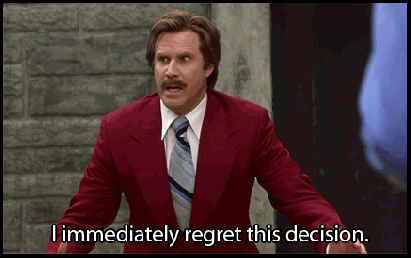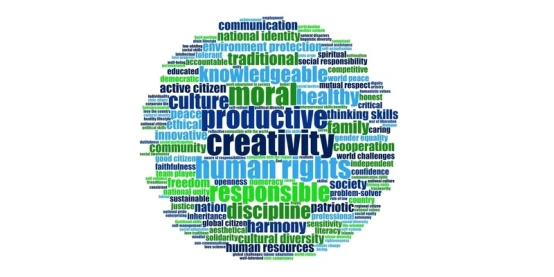In this week’s class, we elaborated on the idea of a portrait of a graduate, and focused on the portrait of a digital citizen. The conversation ensued and debates about age, access, and expectations evolved. Every group focused on a different age, and these conversations left me thinking about my expectations for my grade twelve students. I take a lot of pride in what I teach and molding their young adult brains into what I hope to be successful citizens of our world. I have always left opportunities for discussion on real issues, global issues, and debates they take interest in within my ELA classroom. I believe it is really a place they can explore who they want to be and what they want for their future and their world. 
I think as we move forward in the world of education, it is greatly important we educate students on media literacy, as much if not more than regular literacy. For those who don’t know what media literacy is, it is the “ability to identify different types of media and understand the messages they’re sending” according to Commonsense Media. This is not a subject many teachers feel comfortable with and as we discussed in class, I think  educating teachers on digital citizenship is the best place to start. It is too easy for teachers to say they don’t understand what to do so they just don’t teach anything to do with media. According to Fran Blumberg’s article from this week, Ezther Hargittai stated, “there are substantial skill gaps between people who claim to be effective Internet users…Many instructors at the high school and the college level remain woefully ignorant of the economics of the Internet and few can explain how Google produces a list of hits when you enter various keywords.” We need to give teachers the tools to be successful in order to then successfully educate our students. It cannot be a stand alone unit or lesson either. Digital Citizenship needs to be integrated into many subjects areas and lesson plans – that is where it is most effective and valuable for students.
educating teachers on digital citizenship is the best place to start. It is too easy for teachers to say they don’t understand what to do so they just don’t teach anything to do with media. According to Fran Blumberg’s article from this week, Ezther Hargittai stated, “there are substantial skill gaps between people who claim to be effective Internet users…Many instructors at the high school and the college level remain woefully ignorant of the economics of the Internet and few can explain how Google produces a list of hits when you enter various keywords.” We need to give teachers the tools to be successful in order to then successfully educate our students. It cannot be a stand alone unit or lesson either. Digital Citizenship needs to be integrated into many subjects areas and lesson plans – that is where it is most effective and valuable for students.
As Adam said in his blog this week, many students don’t understand the ideas of privacy or the inappropriateness of taking photos of everyone and anyone around them. This is where the education needs to begin – online etiquette and empathy. I recently had a teachable moment in my classroom where we discussed why we do not check banking information over public wi-fi and it shocked me that no one is telling students this!!  It is these simple teachable moments where this information can be taught. Students need to be responsible for their technological uses and we just assume because they grew up in a tech world, that they understand the uses, but they don’t. Students need to be able to “consider the potential risks and harms of media messages; and understand how differences in values and life experience shape people’s media use and their message interpretation.”
It is these simple teachable moments where this information can be taught. Students need to be responsible for their technological uses and we just assume because they grew up in a tech world, that they understand the uses, but they don’t. Students need to be able to “consider the potential risks and harms of media messages; and understand how differences in values and life experience shape people’s media use and their message interpretation.”
In the interview with Renee Hobbs also said in the article that teaching media literacy can be messy, but that’s why it works and teaches students how to be responsible online. They need to experience it. If I think about my current practices, I always assumed students understood what to do and how to do it online. I never educated on properly  researching because I assumed they had figured it out by the time they got to me. I was soooo wrong. This year, I am really trying to focus on finding credible sources and having high expectations for the resources they use online. It is time consuming, but I know it is worth it! In Alina Tugend’s article, These Students are Learning About Fake News and How to Spot It, I found the acronym IMVAIN to be really useful moving forward:
researching because I assumed they had figured it out by the time they got to me. I was soooo wrong. This year, I am really trying to focus on finding credible sources and having high expectations for the resources they use online. It is time consuming, but I know it is worth it! In Alina Tugend’s article, These Students are Learning About Fake News and How to Spot It, I found the acronym IMVAIN to be really useful moving forward:
“Are sources independent, are there multiple sources, do they verify evidence, and are they authoritative, informed and named sources?”
My students are currently working on a research project, that I will be talking about more in the upcoming weeks in my major project updates. They have really taken to the challenge of lateral reading and finding good sources. They have been asking good questions, and trying to be as unbiased as possible while preparing their presentations. I’m excited and looking forward to seeing the results! I also want to challenge my students to use the following questions I got from the Renee Hobbs article:
(1) Who is the author and what is the purpose?
(2) What techniques are used to attract attention?
(3) What lifestyles, values and points of view are represented?
(4) How might different people interpret this message?
It is easy to use these questions for fake news and checking sources, but my hope is to apply them to all literature challenging my students to always think no matter what they are reading, viewing, or listening to that there is a purpose and viewpoint to the text. I am hopeful for the future of teaching digital citizenship in our classrooms. As Tegund put it nicely, “research has shown that an inability to judge content leads to two equally unfortunate outcomes: People believe everything that suits their preconceived notions, or they cynically disbelieve everything. Either way leads to a polarized and disengaged citizenry.”
Until next time,
Shelby


Hi Shelby,
I couldn’t agree with you more on the importance of educating the teachers on digital-, and media literacy to be able to teach students critical thinking when it comes to using technology. Without having a deep understanding, the ready-to-use digital citizenship lesson plans can be delivered, but certainly not weaved into the different subject areas, reaching a higher level.
I found the additional information on lateral reading very informative. I certainly have a better understanding of the term.
Thank you,
Melinda
LikeLiked by 1 person
Hi Shelby!
It is awesome to see you be able to implement so much of what we are learning with your students. I teach young kids so it is interesting for me to see your conversations with high school students. You are so right when you talk about assumptions that students should know about these topics because they have grown up in this digital world. It’s amazing to me how much they don’t understand about online etiquette, privacy, etc. But I can’t blame them because I am just learning all of this as well and I know many parents aren’t educated on digital literacy as well. It’s so important to start these conversations and advocate for teachers to have PD on these topics. Thanks for the post! 🙂
LikeLiked by 1 person
Thank you Christina! It is so important we have these conversations at all ages. Because I teach high school, I’m curious what kinds of conversations you have with your younger students?
LikeLike
Pingback: #DigCit in Schools – CATHERINE READY
As usual, another excellent reflection Shelby. I agree with you that we must go beyond the teachable moments and challenge our students in taking digital citizenship and media literacy seriously. The idea of teaching etiquette really appeals to me. The only issue I’m having trouble on this angle is the idea of relative “anonymity” online. Many of your students create alternate profiles to hide their true self. Consequently, they are often tempted to use there alternate/fictional profiles to do unethical things in a “safe” manner. Obviously, this practice often backfires and creates more problems for the individuals. I wonder how this fake profile habit be addressed on an internet that seems to be become increasingly less civilized. Thank for the great read once again!
LikeLike
Hi Daniel! You make a really good point about the fake identities. It has a lot of potential to allow students to be themselves, but there is the potential for unethical actions, like you said. I wonder if there is a way we can also approach this as teachers. Maybe something I will think about and add to my major project. Thanks for a thoughtful response!
LikeLike
Great post, Shelby! I found the information you shared about media literacy to be very helpful to me, as I’m still a little unsure with the best way to incorporate it with my students. In particular, I hope to start using a few of the tools suggested, like the IMVAIN acronym. Thanks for sharing the importance of simple teachable moments (ex. using public wi-fi). I think with recent media stories in Regina, there will be more opportunities for teachable moments – sometimes those are the ones that stick with students the best!
LikeLiked by 1 person